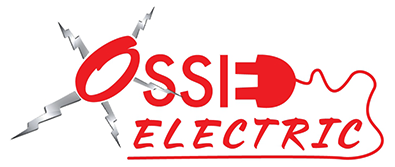LED
If you are ready to enjoy lower electric bills, reduced heat emitted from lights, more flexible design options, and longer lasting light bulbs, call us at Ossie Electric to install new LED lights and fixtures.
LED (light emitting diode) bulbs are rapidly replacing incandescent and fluorescent ones in many homes because, with the exception of purchase costs, they offer many more benefits:
| Incandescent | LED | |
| Acquisition cost | $ | $$ |
| Operating cost | $$$ | 90% more efficient |
| Useful Life (hours) | 1,000 hours | 10,000-50,000 hours |
| Fragility | Glass, breakable | Plastic, shatterproof |
| Brightness | Bright | Brightest |
| Size | Medium to Big | Small |
| Design Flexibility | Some | Most |
| Installation | $ | $$ |
Incandescent bulbs use electricity to heat a metal filament until it becomes “white hot” to produce light. Over 90% of the energy produced is released as heat and the filament is slowly depleted with each use. That is why typical bulbs are hot to the touch, emanate heat and are relatively short-lived. Since reaching 1,000 hours, the useful life of incandescent bulbs has not materially improved since 1925.
In an LED bulb, the movement of electrons in a semiconductor produces light. Using heat sinks to absorb what little heat is produced, the lower operating temperature further extends the useful life of these bulbs. In fact, LEDs do not burn out or fail. Rather, the useful life is deemed to be the point at which the brightness of the light produced or luminosity decreases by 30% compared to when new.
LED lights are typically amber, red, green and blue. To produce “white” light used in homes, different color LEDs are combined with a phosphor material. In the past, there were certain aesthetic preferences for the “color” or “white light” produced by incandescent bulbs. However, the continued development of LED has materially reduced that perceived gap to the point of insignificance, if not indifference, for most. LEDs are directional light sources – that is more pointed and less diffuse in comparison to incandescent – which further adds to their efficiency.
Here are some LED lighting options:
- Standard Shape A19 – the aesthetics of a typical incandescent
- 3-Way LED – two brightness settings instead of on / off
- Vintage LED Bulbs - A warm orange glow to mimic vintage style.
- Wet Location LED Bulb – suitable for outdoor or humid areas
- Decorative LED Bulbs – smaller bulbs for, say, chandelier
- LED Night Lights - Motion activated, and battery powered, light only the area you need
Market penetration of LED bulbs is in the high single digits worldwide. However comparing the $300 annual electricity costs of a 60-watt incandescent light bulb to the roughly $30 of an LED bulb explains why this number is changing so rapidly. Within five years, LED market share will top 50%. It is hard to dismiss lower operating costs, longer life, faster switching, superior cold weather performance, greater durability, more design options and reduced environmental impact from disposal.
Call Ossie Electric today to learn more about LED and your home lighting options.
